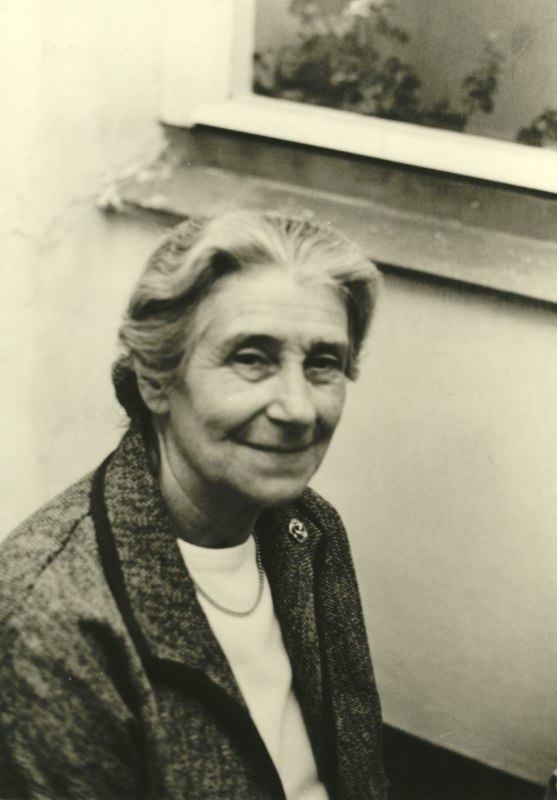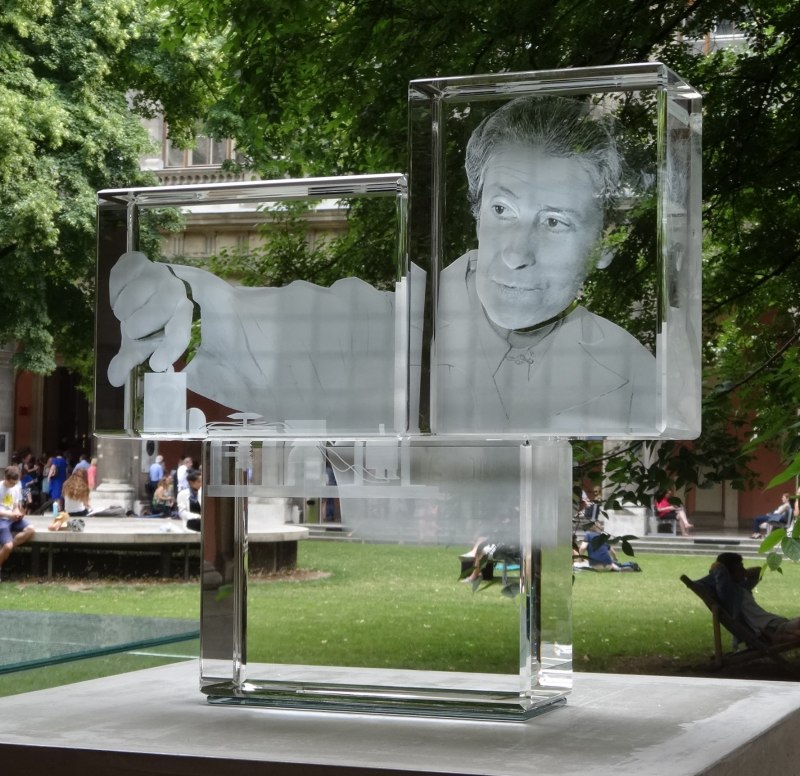Berta Karlik, o. Prof. Dr.
First female full professor at the University of Vienna (1956)
Ehrungen
| Ehrung | Titel | Datierung | Fakultät | |
|---|---|---|---|---|
| Tor der Erinnerung | Karlik-Tor | 1998/99 |
|
|
| Stipendien/Preise/Stiftungen | Berta-Karlik-Programm | 2011 |
|
|
| Denkmal Arkadenhof | 2015/16 | Fakultät für Physik |
|
- Physik
- Philosophische Fakultät
Berta Karlik completed her studies in mathematics and physics at the University of Vienna in 1928 with excellent results (dissertation: "On the dependence of scintillations on the composition of zinc sulphide and the nature of the scintillation process"). She completed a probationary year as a teacher at a secondary school and began scientific work at the Institute for Radium Research at the Austrian Academy of Sciences. On the basis of this work, Karlik was awarded a Crosby Hall Scholarship for the academic year 1930/31 by the International Association of Academic Women. She used the scholarship to do scientific work at the Royal Institution of Great Britain in London under Sir William Bragg, where she became familiar with X-ray studies of crystal structures. Karlik also spent a long time at the Cavendish Laboratory in Cambridge, which was under the direction of Lord Rutherford. She also visited research facilities in France, such as the Institut Curie in Paris. After her return to the Radium Institute, she was employed as a research assistant in 1933. In 1933, she also received the Haitinger Prize of the Austrian Academy of Sciences together with her colleague Elizabeth Rona. In 1937, Berta Karlik habilitated in physics at the University of Vienna with the paper "Die Grenzen der Nachweisbarkeit der schweren Edelgase in Helium" and from then on taught as a private lecturer.
Unlike many other pioneering women at the University of Vienna, Berta Karlik's career was not interrupted by the annexation of Austria to the German Reich in 1938. After the beginning of the Second World War, she also benefited indirectly from the increasing conscription of male colleagues for military service and was appointed assistant at the Institute for Radium Research in 1940 and dietary lecturer in 1942. During this time, in 1943, Karlik achieved her greatest scientific success when, together with her colleague Dr. Traude Bernert, she succeeded in detecting three isotopes of the element 85, astatine, in the natural radioactive decay series.
After the end of the war in 1945, Berta Karlik took over the provisional management of the partly war-damaged Radium Institute, and in 1947 the permanent management. A further stage in her academic career was the award of the title of Associate Professor (1946). After being promoted to associate professor in 1950, she became the first woman to be appointed to a full professorship at the University of Vienna in 1956. She retired in 1974, but continued to work at the institute until her death.
She has published around seventy scientific papers, including works on luminescence in connection with radioactivity, uranium determination in seawater and investigations of noble gases. After her retirement, she has also dealt with the history of her subject and co-authored a work on the important Austrian physicist Franz Exner.
Berta Karlik's scientific work was recognized with numerous awards at home and abroad. In 1951, she received the City of Vienna Prize for Natural Sciences and in 1973 was the first woman to be elected a full member of the Austrian Academy of Sciences. In 2011, the University of Vienna created three professorships with the Berta Karlik Program to promote excellent female scientists. In the same year, Berta-Karlik-Gasse in Vienna 13 was named after her.
She was also honored in 1998 by the naming of one of the "Gates of Remembrance" on the campus of the University of Vienna (Karlik Gate, passageway between Alser Straße/Ostarrichipark and courtyard 1). In 2016, a memorial to Berta Karlik was unveiled in the arcaded courtyard of the University of Vienna (artist: Thomas Baumann).
Zuletzt aktualisiert am 29.02.2024 - 20:08


